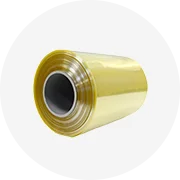Psm plate
(144 products available)






Carbon Fiber Rear Lip Diffuser Splitters for BMW 6 Series F06 F12 F13 M6 M Sport 2012-2016 PSM Style Bottom Guard Plate






Punching Plate/Perforated Grille/round Hole Perforated Metal






Cornstarch Plate Disposable Biodegradable Takeaway Plate 7" Colorful Plate






Disposable Biodegradable Compostable Sugarcane Bagasse Paper Plates and Bowls Cutlery Set Tableware for Wedding Party Picnics
Popular in your industry






New Portable 4KW Multifunctional Electrical Iron for Hole Punching and Metal Plate Cutting in Manufacturing Plants






2025 New Design Cat Chew Toys Anti-Knock Self-Pleasure Plate for Boredom Relief Slow Food Snacks Tooth Cleaning Pet Supplies






Wholesale Cornstarch PSM Eco-friendly Biodegradable Food Trays Lunch Plates Lunch Tray






PSM Style Carbon Fiber Rear Diffuser for BMW 6 Series M6 F06 F12 F13 2012-2014 Rear Bumpers Diffuser Lower Guard Plate Lip






Party Disposable Fork Spoon Knife Plates Paper Wooden Bamboo Utensils Dinnerware Cutlery Tableware Set






Perforated Metal Sheet Price 20 Mesh 304 Stainless Steel Punching Plate Perforated Aluminum Metal Sheet Punched Mesh






Custom Label Fashion Light Plate Solid Color Flat Edge Casual Hip Hop Hat A Frame Snapback Hat Hats For Men Baseball Cap






1xxx 3xxx 5xxx Alloy Trailer Aluminum Checkered Plate Sheet for Sale






PSM Style Rear Diffuser for BMW M6 6 Series F06 F12 F13 M Sport 2012-2014 Car Bumpers Carbon Fiber Diffuser Bottom Guard Plate






Biodegradable Plate 9" Round Plate Disposable Corn Starch Plate






Gold Glitter Plastic Plates With Disposable Silverware, Cups Dinnerware Sets for Wedding Parties Events






Portable 4KW Electrical Multifunctional Angle Iron Cutting Machine Construction Manufacturing Hole Punching Metal Plate New






Wholesale Cornstarch PSM Eco-friendly Biodegradable Food Trays Lunch Plates Lunch Tray






Hot Sale Wedding Party Food Serving Tray Wholesale Cheap Disposable Plastic Dinner Luxury Plates Sets Dinnerware






Disposable Spoon and Fork Set With Napkin and Cutlery Set Party Paper Sugarcane Fiber Plates Sets Dinnerware Dispos






Wholesale Disposable Elegant Party Plastic Dinner Plates Dinnerware Sets Gold Clear Plastic Plates






Disposable Plate Biodegradable Tableware Paper Tableware Sugarcane Bagasse Plate Sugar Cane Plates






Square Dinnerware Set Gold Rim Dessert Dinner Plastic Disposable Charger Plates With Cups Paper Napkins Fork Spoon Knife






Wholesale High Quality Biodegradable Disposable Restaurant Sugarcane Plates Dinner Plate






Wedding Party Marble Design Disposable Plastic Dinnerware Set With Silverware and Gold Rim Cups White and Gold Plates





Eco Friendly Party Supplies Compostable Sugarcane Fibers Tableware 50 Biodegradable Dinner Paper Plates






Free Custom Logo Samples Biodegradable Sugarcane Bagasse Food Container-Better Bearing for Party Occasions Plates and Bowl






Gold Glitter Plastic Plates With Disposable Silverware, Cups Dinnerware Sets for Wedding Parties






Dinnerware Set Disposable Sugarcane Plate Unbreakable Dinnerware Set CPLA Cutlery Sets






Plate Dinnerware American Classic Dubai Wholesale Market Breakfast China Plastic Tableware Set






Plate Dinnerware American Classic Dubai Wholesale Market Breakfast China Plastic Tableware Set






Fancy Disposable Plates Dinnerware Sets for Wedding Parties Glitter Plates Plate Dish Round PS Gold Glitter Pattern






Eco-Friendly Sugarcane Dinnerware Set Biodegradable Plate Bowl Cup Spoon Combo for Home Use Travel Sustainable Tableware from






Disposable Plastic Custom Supplies Plates Gold Party Plates Set
Top categories
About psm plate
Types of PSM plates
The PSM plates are made to satisfy the requirements of multiple industries. The plates are used to make various items. The types of PSM plates can be categorized based on their coating, material, and application.
-
Material-based classification
The PSM plates are made of the following materials:
The metal plates are made of galvanized steel. The galvanized coating protects the steel from corrosion and other damage.
The aluminum PSM plates are lightweight, corrosion-resistant, and have good thermal conductivity.
The stainless steel plates are made of steel, chromium, and nickel, making them strong and corrosion-resistant.
The plastic PSM plates have a durable and lightweight construction. They are made to use in the applications that need electrical insulation.
The ceramic plates have a durable and heat-resistant construction. They are used in the applications that need electrical insulation and protection from chemicals.
The composite plates combine different materials to utilize the advantages of each material.
-
Coating-based classification
PSM plates are made with different coatings to meet specific requirements.
The plates with a non-stick coating have a special coating that prevents food and other materials from sticking to the surface.
The corrosion-resistant plates are made with a coating that protects them from rust and other types of corrosion.
The wear-resistant plates are made with a coating that protects them from wear and tear in applications with a lot of friction.
The electrical insulation coating prevents electrical current from passing through the plate.
-
Application-based classification
The automotive PSM plates are used in the automotive industry for various applications, including brake systems, clutches, and bearings.
The PSM plates used in the electrical equipment plates are used for switchgear, transformers, and circuit breakers.
The aerospace PSM plates are used for aircraft components, including insulation, thermal management, and structural support.
The industrial machinery PSM plates are used for pumps, compressors, and other machinery components.
The construction PSM plates are used in the building industry for insulation, fire protection, and flooring.
The oil and gas PSM plates are used for drilling, refining, and other oil and gas operations.
The medical PSM plates are used in medical devices, implants, and diagnostic equipment.
The mining PSM plates are used for equipment in the mining industry for wear protection and insulation.
Design of PSM plates
-
Surface Smoothness
The surfaces of the PSM plates are smooth. This smoothness ensures that the items stick to the plate without any problem. It is essential for the items to stick well, especially in processes like 3D printing. A smooth surface helps create a solid bond between the item and the plate.
-
Shape and Size
PSM plates come in various shapes and sizes. This variety makes them suitable for different needs. No matter what one is using the plate for, there is likely a PSM plate that will fit perfectly. Having many options regarding shape and size allows flexibility and adaptability to various applications.
-
Material Properties
PSM plates are made from polyaramid composite material. This material is known for its strength and durability. Since it is tough, it can withstand the demands of rigorous use. Moreover, this material is lightweight, making it easier to handle and work with. The lightweight feature is especially important in situations where mobility is required or where equipment needs to be moved frequently.
-
Resistance to Chemicals
PSM plates can resist many chemicals. This resistance allows them to be used in environments where chemicals are present. The ability to withstand chemicals prevents damage to the plate and ensures its longevity, even in harsh conditions.
-
Heat Resistance
PSM plates can also handle heat. They are suitable for processes or tasks involving high temperatures. Being heat-resistant is another critical characteristic that PSM plates possess. It is essential in applications where thermal energy is involved. For instance, in the food industry, certain processes require heating or cooling, and PSM plates can endure such temperature variations without compromising their performance.
-
Electrical Insulation
PSM plates are electrically insulating. This feature prevents any unintentional flow of electricity through the plate. Being an electrical insulator safeguards the users and the equipment from electric shocks and short circuits. It is crucial in applications where electrical components are nearby, as it helps maintain safety and prevent potential accidents.
Scenarios of psm plates
The potential of psm plates is enormous. They can be used in various industries and applications, which shows their versatility and value as a solution. The following scenarios highlight how psm plates can be used in real-world applications.
-
Medical industry
Psm plates are used to prepare tissue cultures, which allow researchers to study cells and develop new treatments. These plates are also used for diagnostic tests, such as analyzing blood samples to detect diseases. They are employed in laboratories to perform polymerase chain reaction (PCR) tests for DNA analysis and cloning.
-
Food industry
The food industry uses psm plates for microbiological testing. These plates help detect and count bacteria, molds, and yeasts in food products. They are also used in the food sector to conduct genetic tests on food samples. This enables the identification of specific genes associated with different food items.
-
Environmental monitoring
Psm plates are employed in environmental testing to check water quality. By growing bacteria from water samples on these plates, it is possible to determine the level of contamination in water bodies. They can also be used to analyze soil samples for the presence of harmful microorganisms.
-
Pharmaceutical research
In pharmaceutical research, psm plates play a crucial role during drug discovery. Scientists use these plates to screen large numbers of compounds against different disease-causing organisms. This helps identify potential drugs that can be developed into new medicines.
-
Industrial applications
Psm plates have applications in the field of materials science. They are used to investigate the properties and behaviors of different materials. These plates can also be utilized for surface characterization studies, allowing researchers to analyze and compare the characteristics of various surfaces.
How to choose a PSM plate
Several factors must be considered when choosing the right PSM plate to ensure it meets the intended application's requirements. These factors include:
-
Application requirements:
Clearly define the specific requirements of the application where the PSM plate will be used. Consider factors such as load-bearing capacity, environmental conditions, temperature resistance, and any other specific needs. For example, if using the plate in a high-load application, selecting a material with good tensile strength and load-bearing capacity is essential.
-
Material selection:
PSM plates are available in various materials, including metals (such as stainless steel or aluminum) and composites. Each material has advantages and disadvantages, such as corrosion resistance, weight, cost, and ease of fabrication. Choose a material that meets the application's performance requirements and other relevant factors.
-
Compatibility with other components:
Ensure that the PSM plate is compatible with other components or systems it will be used with. Consider factors such as the connection methods, fasteners, and any specific requirements for joining the plate to other parts. Choosing a plate compatible with other components will simplify installation and maintenance.
-
Manufacturing capabilities:
Consider the manufacturing capabilities when choosing a PSM plate. Evaluate the ease of fabrication, availability of the selected material, and any specific manufacturing processes required to produce the plate. Selecting a plate made from a material that is easily manufactured will reduce production costs and time.
-
Compliance with standards:
Check if the PSM plate complies with relevant industry standards and regulations. These standards may include performance criteria, safety requirements, and quality control measures. Choosing a plate that meets these standards ensures its reliability and safety in use.
-
Cost considerations:
Evaluate the cost of the PSM plate and its impact on the overall project budget. Consider not only the initial purchase cost but also the long-term factors, such as maintenance costs and potential replacement costs. Balancing cost and performance is essential to ensure the plate is economically viable.
Q&A
Q1: What are the benefits of using PSM plates?
A1: The PSM plates are biocompatible, and their properties can be modified to suit specific needs. They offer excellent adhesion, and their surface can be made to change during the course of an experiment. PSM plates save time and are compatible with a wide range of assays.
Q2: How should PSM plates be stored?
A2: PSM plates should be kept in their original packaging, away from direct sunlight and extreme temperatures, to ensure their longevity and maintain their performance.
Q3: Can PSM plates be used in high-throughput screening?
A3: Yes, PSM plates are compatible with high-throughput screening applications, allowing for efficient and simultaneous testing of multiple samples.
Q4: What are the typical applications of PSM plates?
A4: PSM plates have a wide range of applications in cell culture, assay development, and biosensing, among others.
Q5: Are PSM plates compatible with fluorescent imaging?
A5: PSM plates can be used for fluorescent imaging, enabling the detection and analysis of fluorescent signals in various experiments.





















































